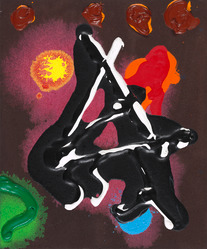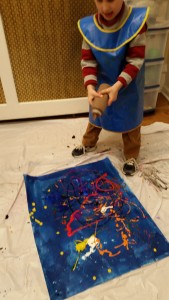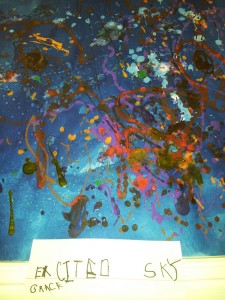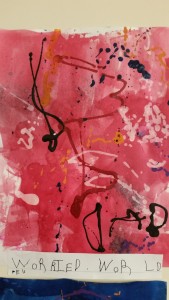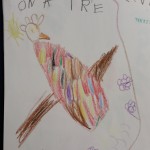
Using Darcy’s idea for revisiting journals mid-year, we had our five-year-old students do just that. I modeled the process for them, looking at a few journal pages, and discussing some possible revisions with the class. My co-teacher advised, “Find a page that gives you an idea, then revise it.” I told them that it is important to have a reason for a revision. As the children looked through their journals, I circulated around and asked them about their thought processes.
As Hudson revisited a drawing of an owl, he said, “I’m coloring in the feathers because I like how it looks with the feathers.” (The original drawing showed a blank white empty circle for the owl’s body.
When he finished his revision, he commented, “I like making feathers. It makes it more good. It was easy to revise.”
A careful eye will also note that Hudson added a sun and sky and flowers to his original drawing.
Beside him, Edward explained, “I added a sky and a dandelion. The dandelion used to be a blue flower, but when I added the blue sky, you couldn’t see it anymore, so I made it a dandelion.” He also added, “I liked doing the revising, but it was hard.”
Pell pointed to his drawing of a planet. “The planet had aliens, but it needed a volcano. The volcano is erupting, so now the alien has to find a new planet.” When asked how the revision process was for him, Pell lamented, “It was really hard. Some of the colors wouldn’t come out on my paper, over the other colors that were already there.”
Harper had found a picture of her family that she had drawn some time ago. I asked her how she was revising it. “I’m making some hearts around it for love.” When asked how the revision process was, Harper said, “I liked that I had a chance to draw different things. My picture is better now.”
Since our first day of revising, we have noticed that many of the children are still going back through their journals, seeking ways to further explain, enhance, and elevate their work.


